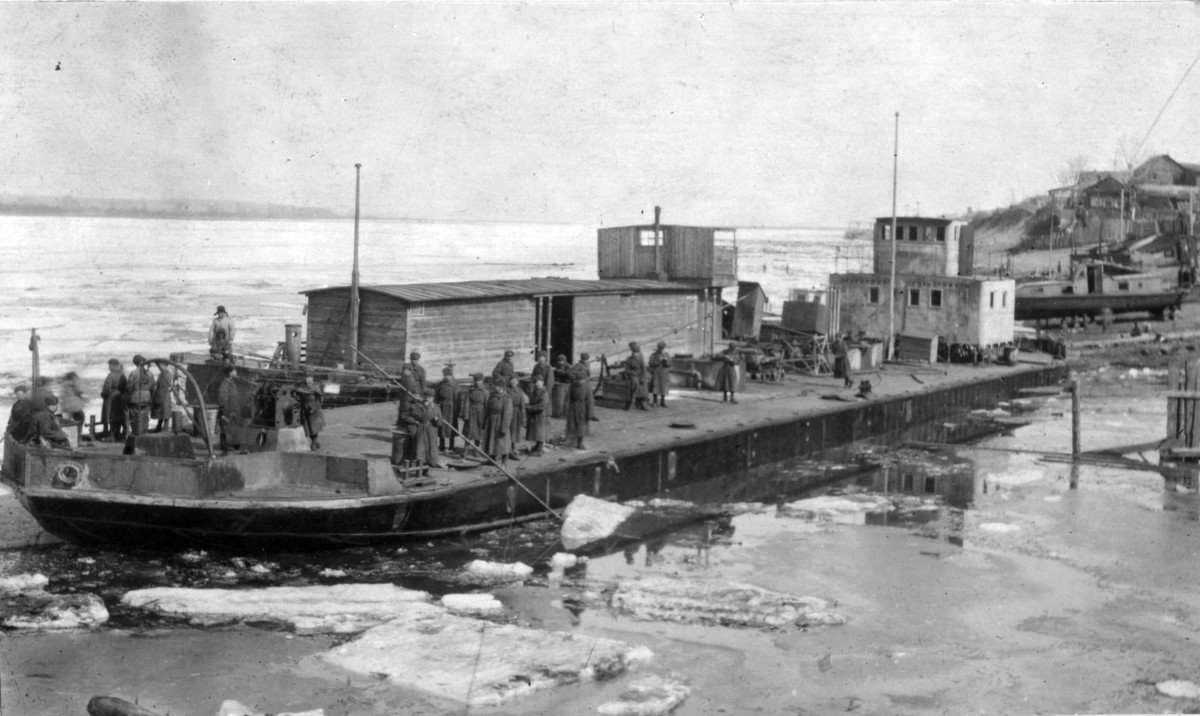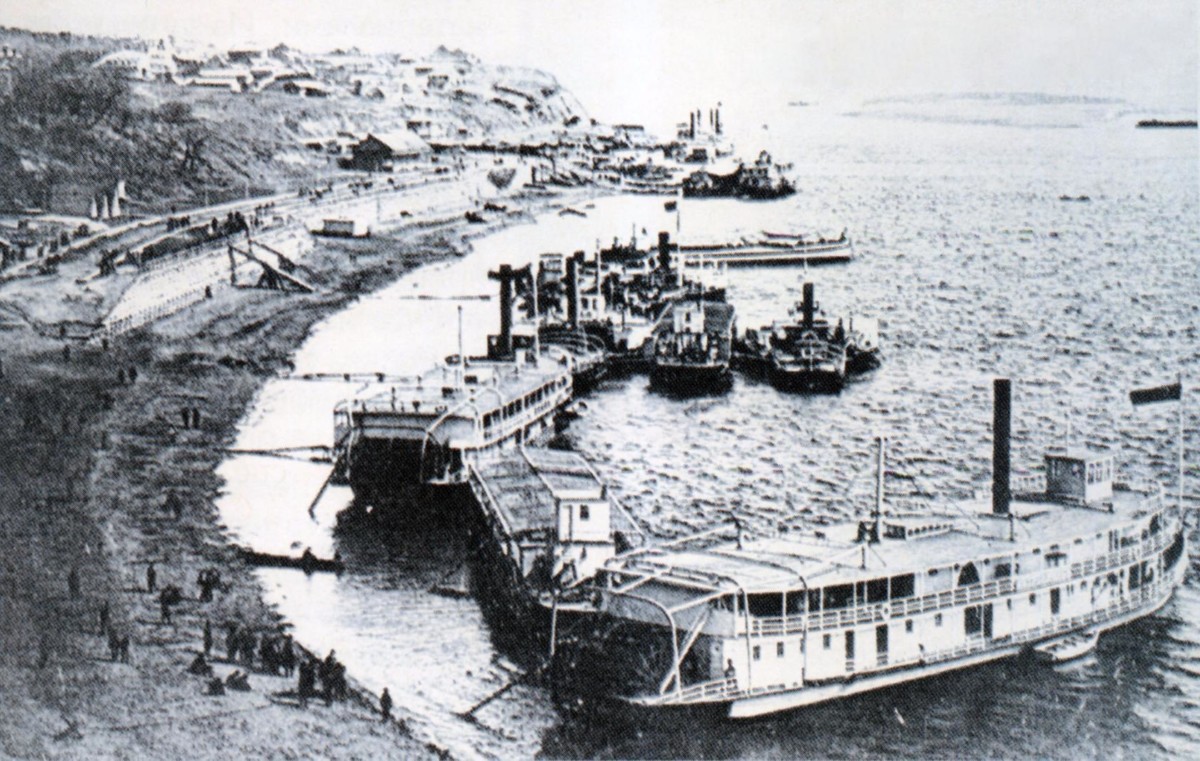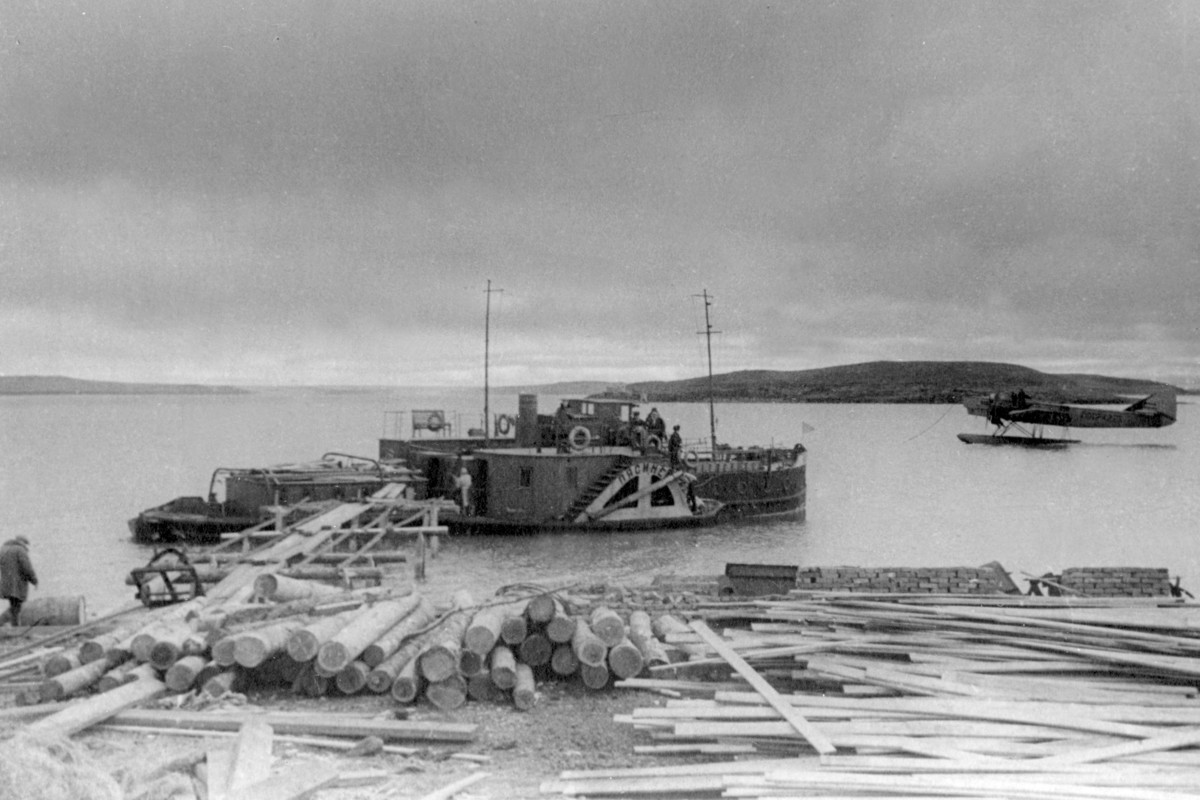#ARCTIC. #SIBERIA. THIS IS TAIMYR. Barges, lighters, tugboats, rare passenger ships moored near the shore, but could not come close, and long wooden ladders were thrown onto them, along which the arrived equipment was unloaded and Norilsk coal was loaded manually.
Here is how the Norillag prisoner Iosif Shamis recalled that:
“Our business was loading Norilsk coal onto a barge. Coal is fed to it by wheelbarrows, which are driven by hard workers along a ladder thrown aboard the barge. The work is not easy: the ladder is at an angle of about 30 degrees; it is slippery because of coal dust, especially when a person is shod in shoes with rubber soles; the lighting in the port is poor. For convenience, a guide board is sewn in the middle of the ladder – a wheelbarrow wheel rolls along it. But this board is narrow, the grip of the sole with the ladder is weak – therefore, it is necessary not only to push the wheelbarrow, but also to be careful not to slip off the ladder into the water along with the wheelbarrow.
During the first navigation in 1935, 50 thousand tons of cargo were unloaded in Dudinka, however, not all of them could be delivered to Norilsk – there was no railway yet. The following year, a temporary solution was found for unloading: crib berths – log boxes on piles filled with stone. Thanks to the first 40 meters of cribs in 1936, twice as much cargo was accepted.
The decision turned out to be successful. The cribbed berths were unlike the flimsy wooden decks from which the prisoners fell into the water. Those were solid structures that could withstand the of people and goods’ weight, and also made it possible to introduce the first signs of mechanization: mobile belt conveyors. This is how the port of Dudinka gradually grew.
In the History Spot’s previous publication, we told that during the Norilsk development there were many unrealized projects.
Follow us on Telegram, VKontakte.
Text: Svetlana Ferapontova, Photo: Nornickel Polar Branch archive







